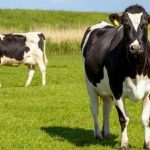Leather goes for Zero Allocation
The leather industry has long argued that as a by-product, our raw materials, hides and skins, should not carry any environmental burden from the rearing of livestock. This is the concept of zero allocation.
What is at stake with zero allocation? There is a debate when determining the carbon footprint of animal by-products. Two sides oppose each other.

One side, which includes slaughterhouses, is convinced that the carbon emissions caused by a cow during its lifetime must be distributed among meat and milk and also all by-products.
For hides, this results in a carbon dioxide (CO2) burden derived from agriculture, which is added to leather. This gives a disadvantage to animal by-products compared to, for example, synthetic products.

The other side, including the tanners, stands for zero allocation. This means that only the products that the animal was reared for, i.e. meat and milk, should carry the CO2 burden from animal husbandry. Unlike the primary products of livestock rearing, meat and milk, by-products like hides and skins may not always be further processed (e.g. because the carbon footprint is too large), and become waste. In the 2008 and 2020 crises, this happened with a large number of hides and skins.

If the skins available worldwide were disposed of to landfill, their decomposition would create significant additional CO2, amounting to approximately 5 million tons of harmful climate gases.According to the US EPA emissions equivalencies calculator, that corresponds to the annual emissions of 1,087,400 average cars.
That’s quite a saving! Don’t waste this resource, use it!
edited in October 2021 by

in collaboration with

Detta inlägg finns också tillgängligt i: Engelska



